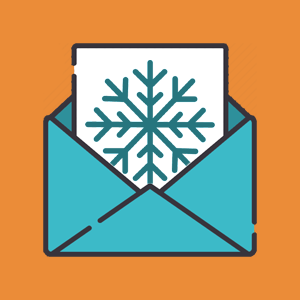Email marketing remains a cornerstone of effective communication and customer engagement. Among the various email marketing techniques, cold emailing stands out as a potent method to reach out to potential customers, partners, or collaborators. In this article, we will delve into the art and science of cold email marketing, discussing best practices, strategies, and the tools you can use to optimize your efforts.
remains a cornerstone of effective communication and customer engagement. Among the various email marketing techniques, cold emailing stands out as a potent method to reach out to potential customers, partners, or collaborators. In this article, we will delve into the art and science of cold email marketing, discussing best practices, strategies, and the tools you can use to optimize your efforts.
What Is Cold Email Marketing?
Cold email marketing refers to the practice of sending unsolicited emails to individuals or organizations who have not previously engaged with your brand or expressed interest in your products or services. The goal is to initiate a conversation, build relationships, and ultimately, convert recipients into customers, partners, or collaborators.
The Importance of Cold Email Marketing
Cold email marketing remains a vital strategy for businesses and marketers for several reasons:
- Expanding Your Reach: Cold emailing allows you to connect with a broader audience beyond your existing customer base.
- Cost-Effective: Compared to other marketing channels, cold email marketing is relatively cost-effective, especially when considering its potential return on investment (ROI).
- Personalization: When done right, cold emails can be highly personalized, increasing the chances of engagement and conversion.
- Lead Generation: Cold emails are an excellent method for generating leads and filling your sales funnel with potential customers.
Now that we understand the significance of cold email marketing, let’s dive into the best practices and strategies for a successful campaign.
Best Practices for Cold Email Marketing
- Segmentation: Begin by segmenting your email list based on factors such as demographics, behavior, and preferences. This enables you to send more relevant and targeted emails.
- Personalization: Address recipients by their first name and customize the email content to suit their interests and needs. Personalization goes a long way in capturing the recipient’s attention.
- Compelling Subject Lines: Craft attention-grabbing subject lines that pique the recipient’s curiosity and encourage them to open the email.
- Value Proposition: Clearly communicate the value your product or service offers to the recipient. Explain how it can solve their problems or improve their lives.
- Clear Call to Action (CTA): Every cold email should have a specific and actionable CTA. Whether it’s scheduling a call, downloading a resource, or making a purchase, make it easy for recipients to take the next step.
- A/B Testing: Continuously test different elements of your emails, such as subject lines, body content, CTA buttons, and visuals, to optimize for better engagement and conversion rates.
- Timing: Send emails at optimal times based on your target audience’s behavior and time zone. Experiment to find the sweet spot for your specific audience.
- Compliance with Regulations: Ensure your cold email campaigns comply with data protection regulations, such as GDPR or CAN-SPAM Act, to avoid legal issues.
Strategies to Prevent Cold Emailing
While cold emailing can be effective, it’s essential to minimize the need for it by implementing other strategies:
- Content Marketing: Create valuable content that attracts and nurtures leads, making them more receptive to your emails.
- Inbound Marketing: Use SEO, social media, and content marketing to drive organic traffic and capture leads who have shown genuine interest in your offerings.
- Networking: Build relationships with industry influencers, partners, and customers, as they can introduce you to their network, reducing the need for cold emailing.
- Referral Programs: Encourage your existing customers to refer others to your business, thus creating warm leads.
Tools for Successful Cold Email Marketing
To streamline and enhance your cold email marketing efforts, consider using these tools:
- Email Marketing Platforms: Tools like Mailchimp, HubSpot, or ConvertKit provide features for list management, email automation, and analytics.
- CRM Software: Customer Relationship Management software, such as Salesforce or HubSpot CRM, helps you track interactions, manage leads, and personalize emails.
- Email Verification Tools: Services like Hunter, ZeroBounce, or NeverBounce can help you verify email addresses and reduce bounce rates.
- Email Tracking and Analytics: Use tools like Mixmax, Yesware, or Mailtrack to track email opens, clicks, and engagement metrics.
- Personalization Tools: Tools like Lemlist or Woodpecker can automate personalization and follow-up emails.
- A/B Testing Platforms: Tools like Optimizely or VWO allow you to conduct A/B tests to optimize email performance.
Conclusion
Cold email marketing can be a valuable tool for expanding your reach and generating leads, but it should be executed with care and consideration for best practices. By personalizing your emails, crafting compelling subject lines, and utilizing the right tools, you can increase your chances of success. However, it’s equally important to complement cold emailing with other marketing strategies to reduce the need for unsolicited outreach. With a well-thought-out strategy and the right tools, your cold email marketing campaigns can drive engagement, conversions, and business growth.
